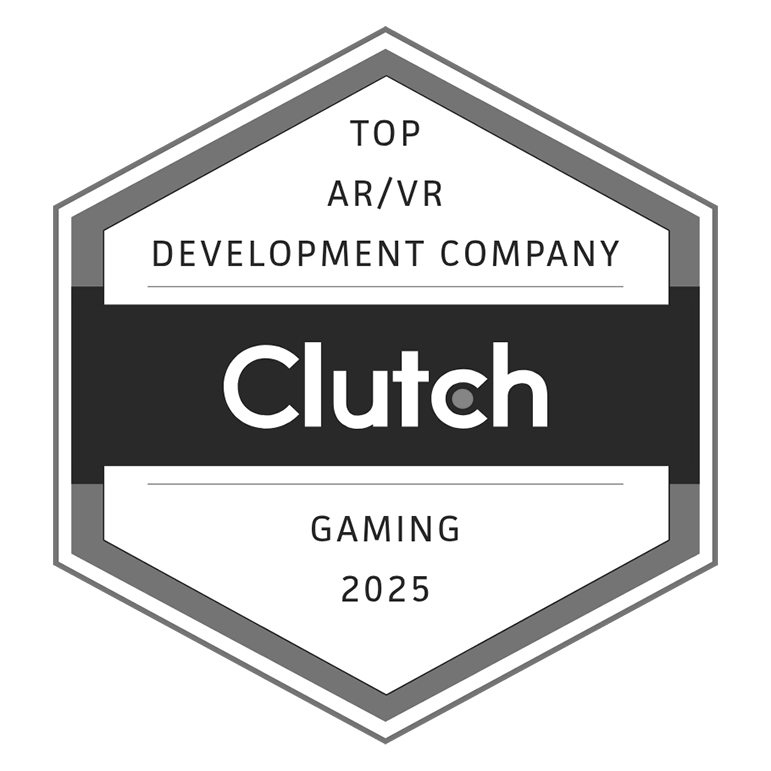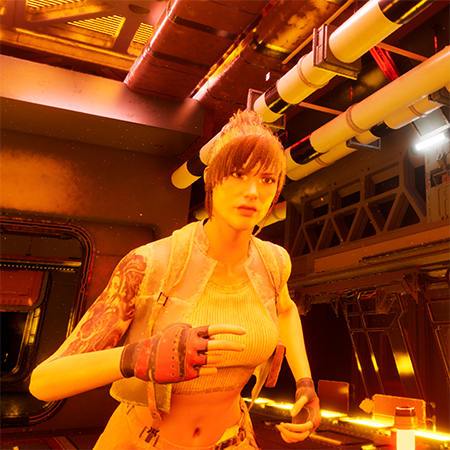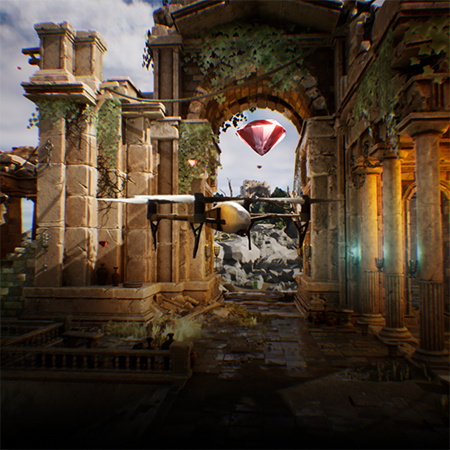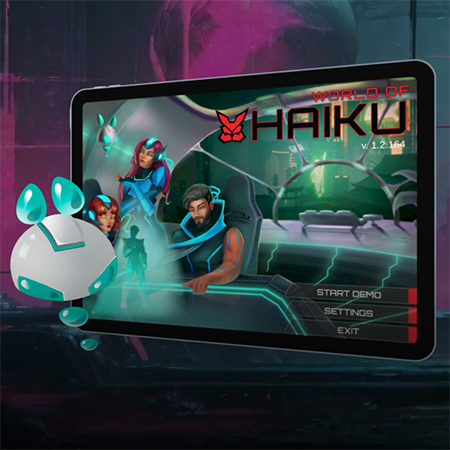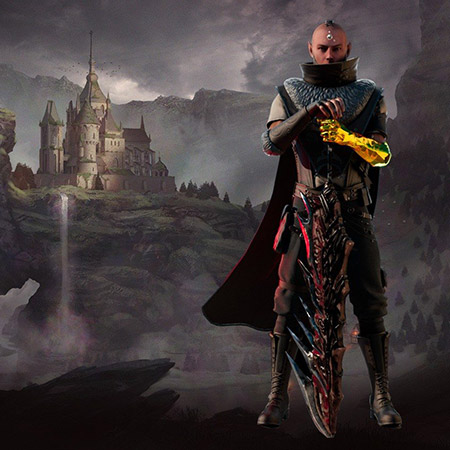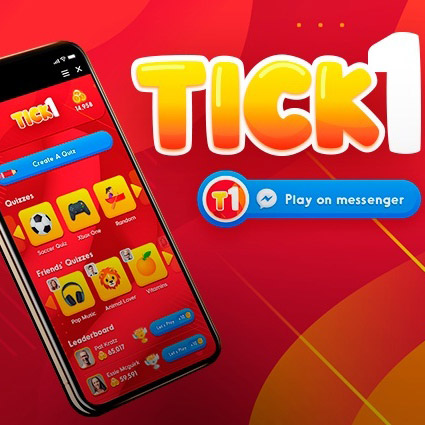Understanding how technology changes game creation is essential for every modern game development company. Developers, players, and anyone interested in interactive media all see how quickly new tools reshape the gaming process.
Artificial intelligence has moved far beyond theory. It now defines how studios build smarter gameplay systems, lifelike characters, and adaptive difficulty levels. In our professional work, we have found that AI is not just an addition to development. It forms the core of many new projects, making games more responsive and personalized.
AI changes both production and play. Developers automate testing, improve performance, and analyze player behavior with greater accuracy. Players experience richer environments and storylines that adapt to their choices. Based on our experience, each AI-driven title brings interaction closer to a natural human response and expands what games can offer as entertainment and training tools.
Our team continues to study how AI influences design, gameplay balance, and content generation. The goal is not to follow trends but to apply proven methods that improve creativity and efficiency. In this article, we explain how artificial intelligence affects today’s development processes and what directions already appear across the industry.
Understanding the Basics of AI in Game Development

As a revolutionary force, AI is already setting new standards and redefining the game development paradigm. This impactful influence is best understood by delving into the essential principles that define AI and exploring its historical trajectory from theoretical inception to practical application, shaping the gaming world as we know it today.
Definition and brief history of AI
AI is the area of computer science that emphasizes creating intelligent machines capable of reacting and performing tasks like humans. This involves simulating several human intelligence attributes such as reasoning, learning from experience, understanding language, recognizing patterns, and problem-solving.
AI's foundations can be traced back to the 1950s, when the term was coined at the Dartmouth Conference in 1956. Early pioneers envisioned creating machines that could mimic human intelligence. However, progress was initially slow, with the field experiencing periods of reduced funding and interest, often referred to as "AI winters." Despite these challenges, AI research persisted.
With advancements in technology and computational power in the late 20th century, along with the advent of the internet, the field of AI saw a resurgence. The ability to process and analyze large datasets allowed AI to grow significantly, paving the way for its applications in various sectors, including cross-platform game development. As we move forward in the 21st century, AI's growth trajectory continues to rise, transforming many aspects of our lives, especially in interactive entertainment.
Keep in mind that generative AI refers to systems that can create new content, such as music, images, or text, based on their learning from large datasets. This technology contrasts with AI used in game development, which, although advancing, remains primarily based on predefined behavior trees, guiding non-player characters' reactions but lacking the dynamism and creativity inherent in generative AI systems.
So when we are talking about AI, it’s essential to differentiate between the AI behind NPCs in games and AI systems that help game developers create new content. Although more and more game modes (like those for Skyrim) prove that AGI can be integrated with the behavior tree of NPCs, giving them a glimpse of consciousness, it’s still not the innovation itself but only its dim shadow, which is yet to grow into a full-scale game dev solution.
Key AI Concepts Relevant to Game Development
Incorporating artificial intelligence into game creation involves several foundational concepts. We focus on three major ones: machine learning (ML), neural networks, and procedural content generation (PCG). Each plays a distinct role in how games are built and experienced.
Machine Learning
ML refers to systems that learn from data rather than relying solely on explicit programming. In game development, ML can power smarter non-player characters (NPCs), dynamic difficulty adjustment, and predictive analytics of player behaviour. For example, a game may analyse how often a player fails at a level and adjust future challenges accordingly. According to an industry overview, ML and AI in game development enable “more personalised video games tailored to each player’s preferences.”
In our professional work, we have observed that ML integration requires rich data sets, clear learning objectives, and iterative testing. Without those, implementation can stall or produce unpredictable outcomes.
Neural Networks
Neural networks, inspired by the brain, use interconnected nodes organized into layers to process inputs into outputs, such as predictions or generated content. In games, they provide pattern recognition, agent decision-making, and content generation. For example, neural architectures can generate levels or drive NPC logic based on player moves. Research shows their role in PCG and similar tasks.
From the projects we delivered, it became clear that neural networks perform well when their architectures align with the game domain (e.g., convolutional networks for visual inputs, recurrent networks for sequence behaviour) and when their outputs are constrained by design rules to maintain playability.
Procedural Content Generation
PCG involves producing game content algorithmically rather than manually. Examples include levels, terrain, quests, characters, items, and more. When tied to AI or ML, PCG becomes adaptive and scalable. One applied case is using PCG to produce vast, varied game worlds with less manual effort.
In our experience at a game development company, we see two primary benefits of PCG: it increases efficiency (by reducing manual design for large volumes of content) and enhances replayability (by varying content across play sessions). For instance, the mobile puzzle game Candy Crush Saga uses AI-assisted PCG to update over 18,000 levels and monitor player pass-rates to maintain engagement.
However, proper human oversight remains essential. Without governance, PCG can yield repetitive patterns or unbalanced scenarios. Designers must set constraints, evaluate generated output, and ensure that automated content adheres to intended gameplay quality.
AI Game Development: A Brief Overview
Artificial intelligence has transformed how games are developed and experienced. Its progress marks a shift from predictable patterns to adaptive systems. Understanding this journey explains how AI became a foundation for modern game production.
A glimpse of AI in early video games
The first uses of artificial intelligence in gaming were modest but crucial. Early developers designed simple rule-based systems to simulate opponent behavior and create basic challenge loops. Pong demonstrated that even minimal AI logic could create competitive tension by automatically adjusting paddle movements in response to the ball’s trajectory. Space Invaders expanded on that foundation by varying enemy speed and formation as the player advanced, introducing a sense of escalating difficulty.
As computing power improved, developers refined AI implementation. Developers applied algorithms that adjusted gameplay based on player input, giving each session a different rhythm. Adaptive play slowly replaced static responses, making every interaction less predictable and more personal.
Modern examples show how those early methods evolved into intelligent systems capable of real-time analysis and behavioral modelling. A clear case appears in AI avatars in casino applications, where artificial intelligence personalizes user interaction, adapts to decision patterns, and sustains engagement throughout extended play.
From the earliest experiments to today’s data-driven systems, developers have relied on AI to help games simulate intelligence and emotional depth. Developers constantly refine algorithms, learning models, and behavior trees to define what makes gameplay feel authentic and responsive.
The Evolution of AI in Game Development
Artificial intelligence has reshaped the direction of game creation over several decades. What began as simple rule-based behavior in early arcades has evolved into complex, data-driven systems that define how players interact with digital worlds.
During the 1980s and 1990s, developers started integrating AI-controlled non-playable characters. Pac-Man became an early example of enemy AI that could adapt movement patterns to a player’s route, setting a new standard for dynamic challenge. As technology advanced, games used AI to create more responsive environments. The introduction of 3D graphics in the late 1990s marked a turning point, allowing AI to influence both spatial design and gameplay realism.
Notable examples such as Half-Life and Black & White showed how adaptive AI systems could transform storytelling and engagement. Enemies in Half-Life coordinated attacks and reacted to player tactics, while Black & White used machine learning principles to let creatures learn from player behavior. Those experiments proved that AI could generate emotional and strategic depth rather than simply control movement or aim.
Today, AI functions as a core pillar of production. It influences level design, user testing, performance optimization, and post-release analytics. From generating content through algorithms to enhancing realism through player modeling, AI has become essential in shaping every layer of modern development. The journey from basic scripted logic to adaptive, learning systems illustrates continuous growth in creativity and technical sophistication.
In-Depth: AI and Modern Game Development

Artificial intelligence now defines how modern games are built, tested, and balanced. Developers rely on it to streamline workflows, increase efficiency, and create unique experiences that evolve with each session. Our experience as a game development company shows that AI shortens iteration cycles while improving the quality and variety of content.
AI-powered systems analyze gameplay data in real time, helping studios identify what engages players and where players become frustrated. Designers can then fine-tune mechanics before release. Machine learning also supports realistic behavior patterns in characters and NPCs, allowing them to act unpredictably yet consistently within narrative logic. As a result, players experience organic worlds where each interaction feels intentional.
Creating a game with AI has also become more accessible. Ready-to-use libraries and cloud-based solutions allow smaller studios to integrate intelligent systems without extensive infrastructure. Those tools enable procedural content generation, automated testing, and adaptive difficulty scaling, all of which were once limited to large development teams.
Procedural Content Generation (PCG)
Procedural content generation relies on AI to automate the creation of levels, environments, and narrative elements. Instead of manually crafting each area, developers set parameters that the system uses to generate coherent and playable worlds.
- Diversity in gameplay. AI-based PCG introduces variety into every playthrough. Randomized terrain, variable enemy placement, or shifting puzzles ensure that no two sessions feel identical, maintaining long-term engagement.
- Efficient resource management. Automating content creation reduces production costs and time. A small team can now generate worlds that once required extensive manual labor, freeing developers to focus on design balance and storytelling.
- Personalized experiences. PCG systems can track player preferences and skill levels to dynamically shape environments or missions. A less experienced player may face slower pacing, while an advanced user encounters complex layouts or smarter enemies. The result is a consistently tailored experience that evolves alongside the player’s growth.
In our projects, we have found that PCG works best when guided by strong artistic and gameplay rules. AI handles the heavy lifting of generation, while designers ensure the final output aligns with creative intent and maintains quality.
Non-playable Characters (NPCs) and AI
Artificial intelligence has redefined how non-playable characters behave and interact. Instead of rigid scripts, NPCs now respond to changing conditions and player input, giving each encounter greater depth and authenticity.
- Realistic responses. AI-driven NPCs can interpret context and act in ways that feel intentional. They react to danger, show caution, form alliances, or display curiosity. Such behavior increases immersion and helps players believe in the world around them.
- Interactive environments. With AI systems, NPCs can interact dynamically with both the environment and the player. They navigate obstacles, use cover intelligently, or alter dialogue depending on previous choices. The result is a more fluid and interconnected game world.
- Adaptive strategies. AI enables NPCs to analyze player tactics and respond with evolving strategies. When a player repeats predictable moves, opponents learn to counter them, maintaining challenge and preventing monotony.
Through these mechanisms, NPCs have become more than background figures. They now function as active participants whose actions shape gameplay outcomes and emotional engagement.
AI and Dynamic Game Difficulty Balancing
Artificial intelligence has also reshaped how difficulty levels are managed. Instead of relying on fixed modes, games now use adaptive systems that respond to player skill in real time.
- Player performance analysis. AI tracks metrics such as reaction time, accuracy, and completion rate to adjust difficulty while maintaining flow. Players remain engaged because the challenge stays within their comfort zone, neither too easy nor punishing.
- Progressive challenge. As player proficiency improves, AI gradually modifies the game’s intensity. Enemies may become smarter, resources may grow scarcer, or the puzzle's complexity may increase. Such adjustments encourage ongoing growth and prevent stagnation.
Dynamic balancing benefits all player types. Beginners receive support when needed, while experienced users find continuous motivation. The adaptive nature of AI ensures that each session feels responsive, fair, and rewarding.
AI and Game Testing
Artificial intelligence now plays a central role in quality assurance and optimization. Testing once required extensive manual input, but AI can now perform thousands of test scenarios faster and more accurately.
- Automated testing. Intelligent bots simulate player interactions, covering a wide range of gameplay paths to uncover bugs, logic errors, or visual glitches. This automation increases reliability and shortens production cycles.
- User experience optimization. AI evaluates gameplay data to identify design bottlenecks or pacing issues. Developers can use those insights to adjust level structure, tune mechanics, or refine user interfaces before launch.
- Continuous improvement. Post-release, AI monitors player feedback and usage patterns to guide updates that improve stability and enjoyment. The process allows studios to maintain consistent quality long after release.
The contribution of AI in testing cannot be overstated. It enhances precision, saves time, and ensures a smoother player experience. In our experience, mobile game testing particularly benefits from AI integration. Intelligent systems can quickly test multiple device configurations, network conditions, and interface responses, turning what was once a complex task into an efficient, data-driven process.
Case Studies: Notable Uses of AI in Game Development
Now, let's dive into detailed case studies that highlight the transformational role of artificial intelligence in game development, demonstrating how it has been utilized to enhance gameplay, stimulate user engagement, and elevate overall player experiences across a range of high-profile games.
AI Dungeon by Latitude
AI Dungeon by Latitude exemplifies the revolutionary potential of AI video game development. This text-based adventure game utilizes OpenAI's GPT-3, a powerful language prediction model, to generate interactive and immersive narratives.
- Limitless narratives. AI Dungeon can create virtually infinite storylines based on the user's input, offering unparalleled gameplay diversity and replayability.
- Dynamic responsiveness. The AI can instantly craft meaningful responses or scenarios based on the player's actions, ensuring a dynamic and interactive gameplay experience.
- Personalized adventures. The game can adapt to the player's narrative choices, creating a unique, personalized adventure for each user.
So, as you see, AI Dungeon is a compelling testament to the potential of AI to create rich, dynamic, and highly individualized gaming experiences.
The Last of Us Part II by Naughty Dog
The Last of Us Part II by Naughty Dog showcases the application of AI to heighten realism and enhance gameplay. The game's AI-driven NPCs and environmental interactions set new standards in the gaming industry.
- Complex NPCs. AI technology enables the NPCs in the game to exhibit intricate behaviors, engage in tactical combat, and show a range of emotional responses, enhancing the game's realism and depth.
- Interactive environments. The game utilizes AI to animate the environment and wildlife, creating an immersive post-apocalyptic world that reacts realistically to player actions.
- Adaptive strategies. The NPCs can adjust their approach based on the player's tactics, presenting an evolving challenge.
Therefore, The Last of Us Part II demonstrates the potential of AI to create highly immersive and realistic gaming environments.
Middle-Earth: Shadow of Mordor by Monolith Productions
Middle-Earth: Shadow of Mordor by Monolith Productions features an innovative AI system known as the Nemesis System, which has redefined player-NPC interactions in games.
- Dynamic NPCs. The Nemesis System allows NPCs to remember their interactions with the player, developing personal rivalries that carry on through the game, thus creating a living, evolving world.
- Individualized experiences. Every player's interaction with the game world is unique, as the NPCs adapt and evolve based on the player's actions. This level of personalization enhances the player's immersion in the game world.
- Realistic consequences. The game world reacts logically to the player's actions, and decisions have tangible, lasting impacts on the environment and characters.
Shadow of Mordor provides a clear demonstration of how AI can be used to create deep, engaging, and personalized gaming experiences.
Ubisoft’s Ghostwriter Tool
Ubisoft’s Ghostwriter tool represents an innovative application of AI in large-scale game writing. The system assists narrative teams by generating first drafts of dialogue, particularly for NPC interactions and background conversations, reducing repetitive manual scripting.
- Dialogue automation. Ghostwriter produces initial text variations for NPC chatter, helping writers focus on editing and narrative consistency instead of creating every line from scratch.
- Writer-in-the-loop approach. The AI operates under human supervision, ensuring tone, context, and style remain consistent with the creative vision of the game.
- Improved production efficiency. By streamlining repetitive writing tasks, the tool shortens production timelines without compromising story depth or quality.
Ubisoft’s Ghostwriter demonstrates how AI can support creative teams within a game development company, serving as a collaborative assistant rather than a replacement for human creativity.
Inworld Origins by Inworld AI
Inworld Origins by Inworld AI illustrates how artificial intelligence can bring NPC dialogue to life, allowing players to engage with characters that exhibit unscripted, emotionally responsive behavior.
- Dynamic conversations. The AI generates context-aware dialogue that reacts to player intent, creating natural exchanges that differ from traditional pre-written scripts.
- Emotional simulation. Each NPC can display distinct personalities, moods, and memories, resulting in more believable and immersive interactions.
- Developer accessibility. The system allows creators, including smaller studios, to implement realistic AI-driven characters without extensive programming resources.
Inworld Origins showcases how conversational AI can elevate storytelling and player immersion, giving developers new ways to design emotionally rich, adaptive character interactions.
The Impact of AI on Game Development
Everyone is concerned — can AI create video games by itself? Not yet, let alone quality enough. Still, AI’s impact on game development is transformative and profound. Its capabilities are streamlining development processes, enabling the creation of richer and more complex game worlds, enhancing player immersion, and fundamentally reshaping how we design, play, and experience games. Its potential for future advancements in this sphere is equally remarkable.
1) Enhanced player experience
Artificial intelligence is at the forefront of enhancing player experiences in video games, and its influence has been truly transformative. Its capabilities have allowed game developers to create dynamic gameplay that adjusts in real time, offering a personalized level of difficulty based on each player's unique skill set. This ensures that games remain balanced and engaging for all players, regardless of their proficiency or experience level.
AI's impact is also significantly felt in the development of NPCs. These characters have become more realistic than ever before, responding to player actions and game events in a believable and immersive way. This increased level of realism adds depth to the narrative and enhances the player's sense of immersion within the game world. Moreover, AI has enabled procedural content generation, allowing the creation of unique and varied game content dynamically.
Finally, the ability of AI to analyze a player's behavior and preferences means that games can offer highly personalized experiences. By understanding what each player enjoys, AI can help tailor gameplay to individual preferences, leading to a more engaging and satisfying gaming experience. The influence of AI in creating gaming experiences that are more engaging, immersive, and personalized than ever before is indeed instrumental.
2) Revolution in game design process
Game development has always been a combination of art and technology. However, introducing AI technologies is radically transforming this space, instigating a revolution in the game design process. No longer are developers solely focused on scripting predetermined sequences or manually crafting intricate, static environments. Instead, the integration of AI brings the promise of dynamic, adaptable game worlds that respond to player actions in real time.
One of the most significant shifts brought by AI is procedural content generation, a technique that can create expansive, intricate game environments with less human intervention. This not only accelerates the design process but also frees up resources for developers to concentrate on enhancing other aspects of gameplay, encouraging innovation, and improving quality.
Beyond creating expansive worlds, AI is transforming character behavior design. Developers can now create NPCs that learn, adapt, and respond to players in an almost human-like manner. This shift in focus from delivering a preset challenge to building a truly interactive, adaptive environment has been a game-changer.
Meanwhile, game testing and debugging, often a time-consuming part of the game development process, is becoming significantly more efficient thanks to AI-powered tools. These can play games at superhuman speeds, identify bugs, and suggest improvements, significantly reducing the time to market.
3) Potential downsides and ethical considerations
While AI brings transformative benefits to game development, it also carries potential downsides and ethical considerations that can't be overlooked.
- Job displacement. AI advancements in game design and testing could displace traditional roles in these fields, presenting a significant downside.
- Opacity of AI systems. The so-called 'black box' problem with AI systems can pose ethical concerns. The lack of transparency in the decision-making processes of AI could impact game outcomes and player experiences unpredictably.
- Blurring of reality and fantasy. AI's ability to create hyper-realistic content might blur the lines between reality and fantasy, raising questions about its psychological impact on players, especially younger ones.
- Ethical responsibilities of game developers. With AI's hyper-realistic outputs, the question of game developers' responsibilities in ensuring appropriate use comes to the fore.
- Privacy concerns. AI's capacity for personalizing experiences, while beneficial, may also raise privacy concerns. There's a need to carefully manage the collection and analysis of player data to ensure privacy.
- Regulation and ethical implementation. Given these potential downsides, it underscores the necessity for careful regulation and thoughtful consideration in implementing AI in games development to ensure ethical standards are upheld.
The Prospects of AI in Game Development
Artificial intelligence in game creation is entering a stage of broad integration across all development pipelines. Recent data show that 52% of developers now work at companies using generative AI tools. At the same time, nearly one in five new games released in 2025 includes AI-generated assets.

New Opportunities
- AI-driven content pipelines. Generative systems allow studios to produce more assets, larger worlds, and frequent updates with smaller teams. Developers can test new mechanics, accelerate live service cycles, and expand creative scope without equal increases in budget.
- Smarter interactions. AI enables NPCs to observe player patterns, adapt their strategies, and react dynamically. Such behavior transforms standard encounters into responsive, unpredictable experiences that evolve with each session.
- Personalized player journeys. Data-driven systems interpret player actions and preferences to adjust story pacing, challenge level, and visual presentation. The result is a continuously tailored experience that aligns with individual play styles.
- Tool accessibility. Cloud-based AI platforms now make advanced features available to smaller studios. Affordable tools reduce technical barriers and encourage experimentation among independent developers.
Persistent Challenges
- Creative-role shifts. Artists, writers, and QA specialists express concern about AI’s growing influence. A recent report shows that 30% of developers view generative AI as having a negative impact on the industry.
- Quality versus speed. Studies reveal that teams using AI sometimes resolve tasks more slowly due to additional validation and correction steps. Balancing automation with quality assurance remains a key challenge.
- Ethical and legal frameworks. Many studios are still developing policies around ownership of AI-generated content, transparency, and fairness in adaptive systems. Clear governance and informed consent are becoming essential for sustainable AI adoption.
Strategic Outlook for Game Development Companies
Our professional work indicates that AI will remain a strategic pillar rather than a passing trend. To prepare effectively, studios should:
- Identify practical use cases. Evaluate where AI brings measurable value in asset generation, testing, and player modeling before full deployment.
- Define clear performance metrics. Track how AI adoption affects production time, content diversity, and user engagement.
- Preserve creative oversight. Keep human direction central to narrative, art, and design decisions to protect authenticity and originality.
- Build transparency and governance. Document data use, maintain human review in adaptive systems, and disclose how AI influences gameplay outcomes.
Artificial intelligence will continue to reshape how games are designed, produced, and experienced. Its impact will depend on how responsibly it is integrated, how well teams maintain creative balance, and how effectively they protect player privacy. The most successful studios will treat AI as a creative partner rather than a replacement for human ingenuity.

The Bottom Line with Game-Ace
The transformative influence of AI in game development is undeniable, opening new avenues for innovation and personalization in the gaming experience. While AI presents remarkable opportunities, we must remain mindful of potential downsides and ethical considerations. Striking a balance between leveraging AI's power and preserving human creativity is essential, so our game development company sticks to traditional game development practices where the human mind is more valued than machine power due to its creativity and flexibility.
While we may not be experts in AGI, our team of skilled developers can harness the capabilities of modern technology to craft exceptional gaming experiences. If you are looking for a reliable partner to turn your game concepts into a playable product, contact us today, and let's embark on an extraordinary journey of gaming innovation together.
 Key Trends Shaping Gamification in Recruitment for 2026 and Beyond
Key Trends Shaping Gamification in Recruitment for 2026 and Beyond  How to Create Crypto Casino Games the Right Way
How to Create Crypto Casino Games the Right Way  AI Recruitment Games: From Real-Time Assessments to Better Hiring Outcomes
AI Recruitment Games: From Real-Time Assessments to Better Hiring Outcomes  Games for Business: Proven Strategies for Engagement and Growth
Games for Business: Proven Strategies for Engagement and Growth  How to Design Learning Games for Kids That Teach Real-World Skills
How to Design Learning Games for Kids That Teach Real-World Skills 








